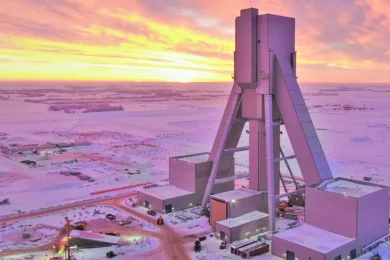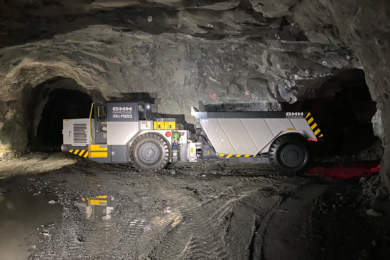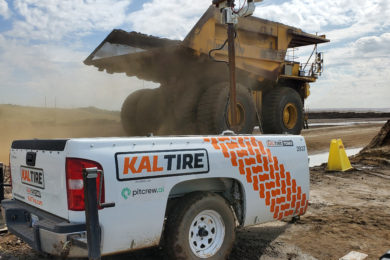IAMGOLD has announced positive results from a feasibility study examining a potential increase in carbon-in-leach production followed by a heap leach operation at its Essakane gold mine in Burkina Faso.
The results support an increase in current hard-rock carbon-in-leach (CIL) plant capacity and outlines an economically viable heap leach facility at the end of CIL operations, the miner said.
The study considered an indicated resource base of 4.878 Moz grading 0.98 g/t Au, inclusive of reserves on the Essakane Mining Concession. Within this was proven and probable reserves of 3.985 Moz grading 0.96 g/t Au.
It evaluated a mine life of 12 years (2020-2031), with mill throughput of 11.7 Mt/y, up from the current design capacity of 10.8 Mt/y. This would be followed by heap leach throughput of 8.5 Mt/y from 2027-2031.
This resulted in average annual production of 433,000 oz during CIL operations, representing a 4% increase above CIL output from the previous study, including peak year production exceeding 530,000 oz using CIL and annual production of 73,000 oz/y of HL production at the end of CIL production.
IAMGOLD estimates a capital investment of $9 million for CIL optimisation, with commissioning targeted for the September quarter of 2020, while there would be a reduction and deferral of total HL capital expenditures by $40 million to $115 million (2025-2026) from the previous study (while maintaining the same HL production profile).
The miner said: “The FS concluded that increasing CIL plant capacity and postponing the HL operation to the end of life of mine defers capital and provides an extension to the life of mine.”
The optimisation of the CIL plant would indirectly result in a reduction of the anticipated HL annual throughput from 10 Mt to 8.5 Mt, with the production profile of the HL operation remaining relatively unchanged as reduced throughput is offset by an improved recovery of gold in HL from 55% to 67%.
The capital cost reduction of the HL facility was achieved by re-using existing CIL plant equipment (primary & secondary crushing circuits) at the end of CIL life and by optimising the HL pad footprint, IAMGOLD said. The latter allows for the HL infrastructure to remain within the current industrial complex of the mine, versus the PFS scenario which would have required additional land outside of the current complex, thus avoiding impact to communities and farmland, it noted.
Steve Letwin, President and CEO of IAMGOLD, said: “With our self-funding lens in place, the IAMGOLD team reviewed the CIL/HL feasibility study and produced a robust, low cost plan with optionality in the future.”
Essakane is expected to produce 380,000-390,000oz of gold this year.










